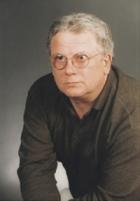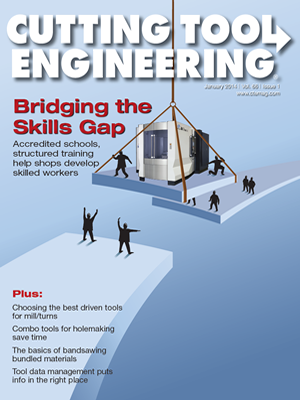After watching some TV shows about manufacturing, such as “Modern Marvels” and “How It’s Made,” I started reminiscing about my career in manufacturing. The shows also got me thinking about the many wonders of science and industry I’ve personally been involved with.
Having been in manufacturing as long as I have, you might think I’ve grown tired of the daily grind. On the contrary, I usually can’t wait to get to work each day. I’m appreciative of all the projects I’ve worked on thanks to the companies I’ve worked for. The array of positions afforded me the opportunity to travel to facilities across our great country and Canada, as well as South Africa, Singapore, Belgium and the U.K.
In the U.S., for example, I programmed a FANUC-controlled plasma cutting gantry robot, which was used to help decommission the nuclear reactor that partially melted down in 1979 at the Three Mile Island power plant in central Pennsylvania. At the old McDonnell Douglas facility in Long Beach, Calif., I watched them extract little dings from the tail section of a plane prior to delivery to a customer. And in the deserts of Utah, I trained workers how to weld plastic pipe while a power plant was being built.
I have installed coating systems throughout the East Coast and California, trained people to use robots and coatings for dental and medical implant applications and installed and serviced robots at aerospace companies in Connecticut and Florida. When John Deere was making a comeback in the 1980s, I trained shop floor personnel to program and operate turning centers. At the time, the huge plant was like a ghost town, and I remember seeing a lone farm implement in the staging area at the end of the assembly line.
I’ve been to a heavy equipment building facility in Milwaukee and watched the assembly line produce mining equipment more than two stories tall. Also in Wisconsin, I saw a horizontal machining center that was about 50 ' wide × 200 ' long. The operator rode with the spindle head unit.
Outside of the U.S., I’ve been to the tar sands region of Alberta before many people heard of it. I trained operators there on the use of articulated robots to coat centrifuges so they would resist abrasive wear when extracting oil from the sand. I’ve been to a gear plant in St. Catharines, Ontario, and trained engineers to operate turning centers.
In South Africa, Belgium and Singapore, I trained operators to use articulated robots for thermal coating spraying. In the U.K., I was fortunate to witness the building of a North Sea oil platform. It was a work of art, standing several stories tall and completely made of stainless steel.
Everywhere I’ve gone, I’ve met individuals, from shop floor associates to top management, who were knowledgeable about their work and took pride in it. I don’t regret not staying at one company for 30 years until retirement. Had I done that, I probably wouldn’t have enjoyed my career as much.
But, I don’t begrudge individuals who stay with the same company their whole career. They are intimate with their company’s products and know the nuances of how to make those products great. They have contributed in their own ways, small and large, to the manufacturing industry and to these TV shows about manufacturing that I watch and enjoy. CTE
About the Author: Mike Deren is a manufacturing engineer/project manager and a regular CTE contributor. He can be e-mailed at [email protected].
Related Glossary Terms
- abrasive
abrasive
Substance used for grinding, honing, lapping, superfinishing and polishing. Examples include garnet, emery, corundum, silicon carbide, cubic boron nitride and diamond in various grit sizes.
- centers
centers
Cone-shaped pins that support a workpiece by one or two ends during machining. The centers fit into holes drilled in the workpiece ends. Centers that turn with the workpiece are called “live” centers; those that do not are called “dead” centers.
- gantry robot
gantry robot
Robot positioned by means of an overhead supporting structure such as a crane or bridge-type support.
- machining center
machining center
CNC machine tool capable of drilling, reaming, tapping, milling and boring. Normally comes with an automatic toolchanger. See automatic toolchanger.
- sawing machine ( saw)
sawing machine ( saw)
Machine designed to use a serrated-tooth blade to cut metal or other material. Comes in a wide variety of styles but takes one of four basic forms: hacksaw (a simple, rugged machine that uses a reciprocating motion to part metal or other material); cold or circular saw (powers a circular blade that cuts structural materials); bandsaw (runs an endless band; the two basic types are cutoff and contour band machines, which cut intricate contours and shapes); and abrasive cutoff saw (similar in appearance to the cold saw, but uses an abrasive disc that rotates at high speeds rather than a blade with serrated teeth).
- turning
turning
Workpiece is held in a chuck, mounted on a face plate or secured between centers and rotated while a cutting tool, normally a single-point tool, is fed into it along its periphery or across its end or face. Takes the form of straight turning (cutting along the periphery of the workpiece); taper turning (creating a taper); step turning (turning different-size diameters on the same work); chamfering (beveling an edge or shoulder); facing (cutting on an end); turning threads (usually external but can be internal); roughing (high-volume metal removal); and finishing (final light cuts). Performed on lathes, turning centers, chucking machines, automatic screw machines and similar machines.


